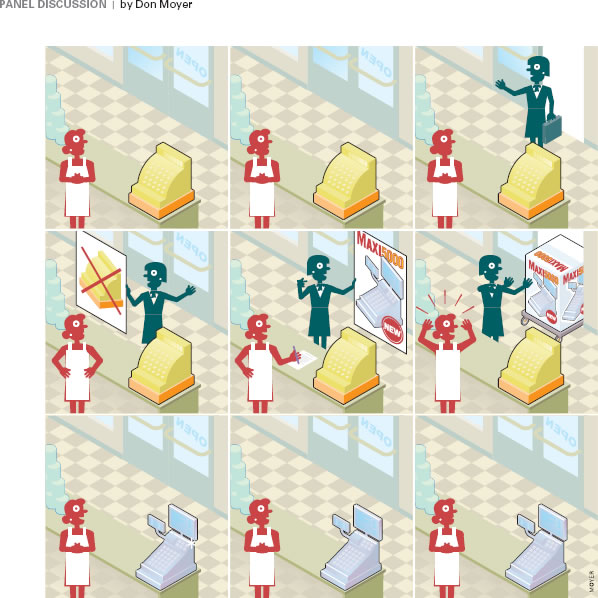I first came across an article about user experience (UX) in January 2006. At the time I was doing some research for the book that would become Academic Librarianship by Design. Almost immediately I saw the connection between the two. User experiences could – probably should – be the outcome of a design thinking process. A library user experience, in particular, struck me as a challenging concept. What would that possibly mean for the end-users? What would constitute, to their way of thinking, a great library user experience? Whatever that might be it seemed reasonable that design activities could help to produce a much improved library user experience.
Since then the book has been completed and I’ve gone on to read many more articles about DT and UX, and I continue to explore, with you, how these two practices can be applied to benefit our libraries. Though they provide no immediate answers, and perhaps might be best consumed by someone new to both DT and UX, I’m going to recommend that you look at the following two new resources.
First, take an hour and watch a highly informative video about UX. “Subject to Change: Creating Great Products and Services For an Uncertain World” features Brandon Schauer and David Yerba, two designers from the firm Adaptive Path. In this Google Talks video presentation they share the key concepts from their new book of the same title. I took away a couple of ideas. First, these folks excel at keeping their explanations simple. User experience – that’s all the user cares about. The experience is the product. Do they enjoy themselves, do they accomplish what they need to do, and do they manage to do it the way they want – with simplicity? Well, there’s more to UX than that, but that’s a good start. I also like their way of explaining the type of design they bring to the process of developing the user experience – an activity everyone in the organization can embrace no matter what their background. Then they discuss The Long Wow – a Wow experience that repeatedly delivers great delights for the user, is memorable, and impresses. In other words, users remember it and return again for more of the same. I’m looking forward to reading the book.
But how do you design that type of experience for your library? If you haven’t done much formal reading about design thinking now is a good time to start. And what better way to start than with a basic article about design thinking from one of the masters of the art – Tim Brown the CEO and President of IDEO. The article appears in the just published June 2008 issue of Harvard Business Review (p.85). The article relates the basic concepts of design thinking and why it can provide a better approach to developing human-centered solutions. In particular I like that Brown further elaborates on his explanation of the “three I’s” – Inspiration; Ideation; and Implementation (see the graphic in the article). I had previously heard Brown discuss this in a video presentation, but the graphic in the article provides a good visual representation of the process as it applies to problem finding, user studies, brainstorming, prototyping and solution development. And since those new to design thinking always ask for examples of how it is applied in real life situations, the article contains several case studies to illustrate the application of design thinking.
Even though I’ve been studying these ideas for over two years I continue to be amazed at the great articles and videos that help me to clarifying my thinking about DT and UX, and how these activities and approaches can be applied to the design of better libraries.
Â
